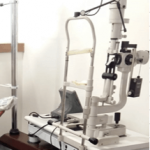Get Best Treatment for Eye Styes
- An affordable and best Eye Styes treatment by the top eye doctors
- Treatment with the best of advanced technologies.
- Online / Offline consultation on Eye Styes
FREE Tele-Consultation
Book Appointment or Video Consultation online with top eye doctors
"*" indicates required fields
What are Eye Styes?
A “hordeolum” or a “stye”, is defined as a red bump that has the appearance of a pimple and its formation takes place on the outside edge of the eyelid. Here’s some things you need to know about eye styes:
- Styes usually heal on their own.
- Styes usually affect just one eye.
- Eye Styes can be external or internal.
- Styes can recur.
- Styes are contagious but have been usually found to be harmless.

- It originates due to the occurrence of a bacterial infection in a hair follicle on one’s eyelid.
- Staphylococcus is a form of bacteria, which inhabits one’s skin and when it gets relocated to one’s eye, it becomes persistently stuck in the hair follicle, thereby resulting in an infection.
- If a style is present for a long period, then it may result in other eye ailments.
Types of “Eye Stye”
External Stye
It’s a form of stye, which forms at the base of the eyelash. This form of stye is generally not harmful if treated upon within a particular period. They can be caused by an infection in the following places:
- Eyelash follicle: The tiny holes in the skin, out of which the eyelashes grow.
- Sebaceous (Zeis) gland: This gland is attached to the follicles of the eyelashes. It produces Sebum. Sebum helps lubricate the eyelash and prevents them from drying out.
- Apocrine (Moll) gland: This Apocrine gland also helps prevent eyelashes from drying out. It is a sweat gland, which is found on the eyelid’s margin.
Internal Eye Stye
It’s a form of stye, which occurs inside the eyelid and causes severe discomfort. This type of style is very painful and mostly requires immediate medical intervention. Most commonly, these are caused by an infection in the Meibomian gland. The purpose of these glands is to produce a secretion that makes up part of the film, which covers the eye.
- Certain things may be experienced by the patients, such as a burning sensation in the eye, crusting of the eyelid edges, itchiness on the eyeball, sensitivity to light, tearing, a feeling that some particle is stuck to the eye, and severe form of distress during blinking.
Symptoms of Eye Stye
The patient will have a painfully small red lump on the eyelid which can make the eye(s) produce tears and become red. Sometimes it can also look like a pimple. Other symptoms of Eye Styes can Include:








Complications of Eye Stye
Though extremely rare, styes can develop complications like:
Meibomian Cyst
It is a cyst of the small glands, which is located in the eyelid. The glands release a fluid, called Sebum, on the edge of the eyelid. This acts as a lubricant for the eyelid. A persistent Stye on the inside of the eyelid can ultimately become a Meibomian Cyst or Chalazion. Especially if the gland has some obstruction. The Meibomian cyst is easily and effectively treatable.
Pre-septal or Periorbital Cellulitis
This may develop when the infection has spread to the tissue around the eye. The layers of skin around the eye start becoming inflamed, making the eyelids go red and swollen. The treatment for this condition is antibiotics.
Eye Stye Causes
Usually, the lump or the “Eye Stye” is a combination of a clogged oil gland and bacteria. Our body has billions of friendly bacteria that have a sort of symbiotic relationship with our body. Most of the time, they do not cause any inconvenience. But sometimes, the bacteria may reproduce and create a pimple, due to the generation of some particular situations.
Some may include:
- Usage of cosmetics after their expiry dates.
- No removing of eye makeup before going to bed,
- Negligence in properly disinfecting the contact lenses before wearing them.
- Handling contact lenses without properly washing your hands.
- Lack of a proper nutritious diet.
- Sleep deprivation.
- Adolescents tend to develop Eye Styes more frequently, but people of any age can develop them.
Eye Styes Prevention
- If someone nearby has an Eye Stye, then the people in the nearby vicinity should not share face towels, etc. to minimize the risk of cross-infection.
- A person must regularly wash their hands while using contact lenses.
- A person with allergies of any kind must avoid rubbing their eyes.
- Maintain cleanliness on the face.
Eye Styes Home remedies
- A warm compress or a washcloth on the eye can be effective in most cases of Stye.
- Most Eye Styes go away on their own without the need for any medical intervention. When they rupture, symptoms start to improve rapidly.
- The compress must be held gently over the eye, to ensure the ease of symptoms. It should not be too hot. Special care should be taken when preparing it for someone else, especially a child. The compress should be held over the eye for a period of 5 to 10 minutes and repeated at least thrice a day
Treatment for Eye Stye
- Usage of antibiotic ointments.
- When an external stye becomes extremely painful and has existed for a longer period, then the person must go to an eye specialist, who may remove the eyelash nearest to it, and drain the pus away by piercing it with a thin needle. This procedure should be carried out only by a professional.
- If the stye persists, the Ophthalmologist may prescribe a topical antibiotic cream or antibiotic eye drops and if the infection spreads beyond the eyelid, oral antibiotics might be prescribed.
- If things still do not improve, further examination of the eye may be required.
When to Consult a Doctor?
One to consult doctor, if one’s Stye:
Is present on the inside of the eye
- Has been getting bigger.
- Has become more painful.
- Has not cleared up, even after a few days of home treatment.
- Has started to affect vision.
Also, consult a doctor if your Eye Styes keep reoccurring. That may be due to an underlying condition such as conjunctivitis, blepharitis, or cellulitis
Best Eye Hospitals for Eye Styes Treatment
India has one of the best eye hospitals for Eye Styes treatment and surgery such as AIIMS, Sankara Nethralaya, LVPEI and Eye Mantra. Eye Mantra is one of the leaders in Eye Styes treatment with over 10,000+ eyes operated so far by its doctors.
Latest technology with specialized approach, gives the most beneficial results after Eye Styes by our top eye surgeons in Delhi and other cities. Consult today with our expert Eye Styes doctors.
Eye Stye Facilities










FAQ's
Symptoms of Eye Styes can include a lump on the eyelid, swelling of the eyelid, pain around the area of an eyelid, redness of an eyelid, sometimes the edges of the eyelids start to form a crust, burning sensation around the eyelid.
Usually, the lump or the “Eye Stye” is a combination of a clogged oil gland and bacteria. Our body has billions of friendly bacteria that have a sort of symbiotic relationship with our body. Most of the time, they do not cause any inconvenience. But sometimes, the bacteria may reproduce and create a pimple, due to the generation of some particular situations.
Usage of cosmetics after their expiry dates can not only cause the development of stye but also other severe eye ailments, negligence in properly disinfecting the contact lenses before wearing them and improper hygiene can cause eye styes.
Sometimes if the stye persists it can lead to the formation of Meibomian Cyst or Pre-septal or Periorbital Cellulitis
Usage of antibiotic ointments, warm compress, and antibiotic creams can help. When an external stye becomes extremely painful and has existed for a longer period, then the person must go to an eye specialist, who may remove the eyelash nearest to it, and drain the pus away by piercing it with a thin needle.
Yes there’s a chance that stress can cause Eye Styes to form, however styes are usually caused due to the reasons mentioned above. It’s a rare possibility for stress to result in styes. Even hormonal changes can cause eye styes.
If you keep getting eye styes it probably means you have oily eyelids or a condition called Blepharitis. This causes your eyelids to easily become infected.
Popping an Eye Stye is really harmful as it can cause further infection and inflammation. You should immediately seek medical help.
Eye Styes tend rarely to affect both eyes at the same time. A person will generally have a Stye in one eye. However, on rare occasions, there may be more than one Stye in the same eye or one in each eye.






